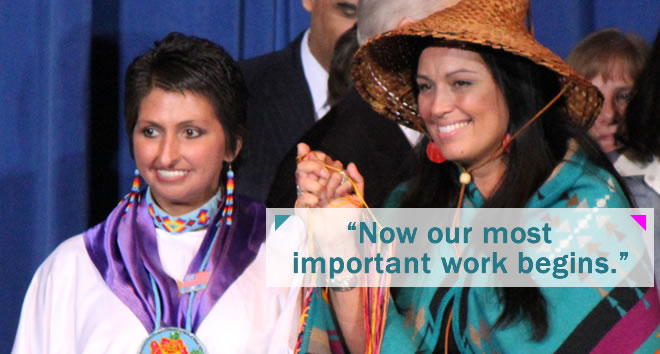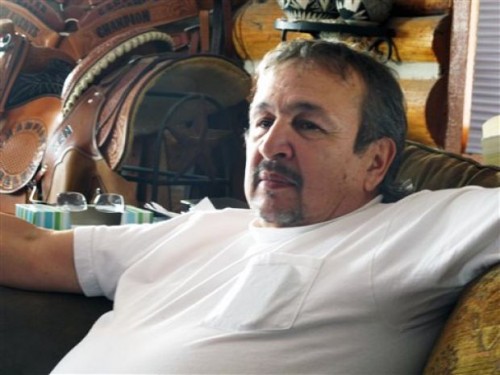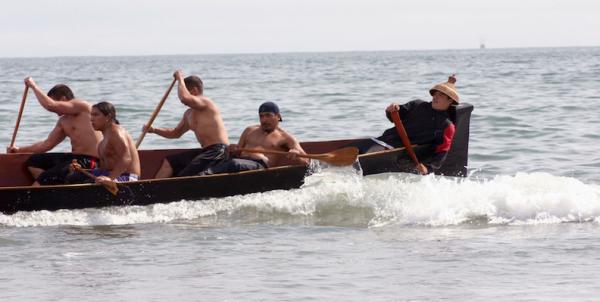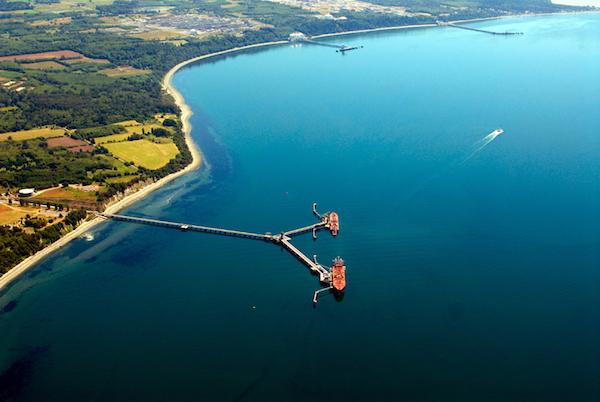By National Congress of American Indians
Washington, DC- On March 7, 2015, Tribal governments may elect to begin exercising jurisdiction over non-Indians who commit crimes of domestic violence, dating violence, or violate a protection order against a Native victim on tribal lands.
“This is a major step forward to protect the safety of Native people, and we thank all Members of Congress for passing the Violence Against Women Act of 2013 and recognizing tribal authority,” said Brian Cladoosby, President of the National Congress of American Indians and Chairman of the Swinomish Tribe.
So far three Tribes, the Confederated Tribes of the Umatilla Indian Reservation, the Pascua Yaqui Tribe, and the Tulalip Tribes have been able to exercise jurisdiction over non-Indians under a Pilot Projectsince February 6, 2014. To date the Tribes have charged a total of 26 Special Domestic Violence Criminal Jurisdiction cases.
“I want to encourage all tribal governments to get this law on their books,” said Juana Majel, Chair of the NCAI Task Force on Violence Against Women. “The main goal is deterrence of domestic violence. On most reservations there are a handful of bad actors who have figured out how to slip between jurisdictional boundaries. They need to get the message. If they continue to assault our women we will prosecute and put them in jail.”
Violence against Native women has reached epidemic proportions. The root cause is a justice system that forced tribal governments to rely on distant federal — and in some cases, state —officials to investigate and prosecute misdemeanor crimes of domestic violence committed by non-Indians against Native women. However, outside law enforcement has proven ineffective in addressing misdemeanor level reservation-based domestic violence. The Justice Department has found that when non-Indian cases of domestic violence go uninvestigated and unpunished, offenders’ violence escalates. The 2013 VAWA Reauthorization authorizes tribal governments to investigate and prosecute all crimes of domestic and dating violence regardless of the race of the offender.
Tribes choosing to exercise Special Domestic Violence Criminal Jurisdiction must provide the same rights guaranteed under the Constitution as in state court. This includes the appointment of attorneys for indigent defendants and a jury drawn from the entire reservation community. “Many tribal courts are already providing these protections to defendants, and it isn’t a big step to provide indigent counsel to all. Just like county courts, tribal courts can contract for public defenders on a case-by-case basis,” encouraged President Cladoosby.
Key Statistics:
- 61% of American Indian and Alaska Native women (or 3 out of 5) have been assaulted in their lifetimes
- 34% of American Indian and Alaska Native women will be raped in their lifetimes
- 39% of American Indian and Alaska Native women will be subjected to violence by an intimate partner in their lifetimes
- 59% of assaults against Native women occur at or near a private residence
- 59% of American Indian women in 2010 were married to non-Native men
- 46% of people living on reservations in 2010 were non-Natives (single race)
- US Attorneys declined to prosecute nearly 52% of violent crimes that occur in Indian country; and 67% of cases declined were sexual abuse related cases
- On some reservations, Native women are murdered at more than ten times the national average
For an overview on tribal VAWA, and more information please see: http://www.ncai.org/tribal-vawa. The Tribal Law & Policy Institute has developed a Legal Code Resource for implementation at www.TLPI.org.















